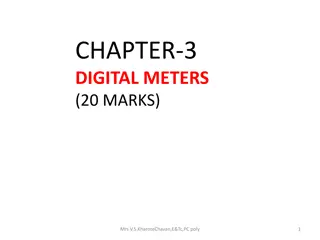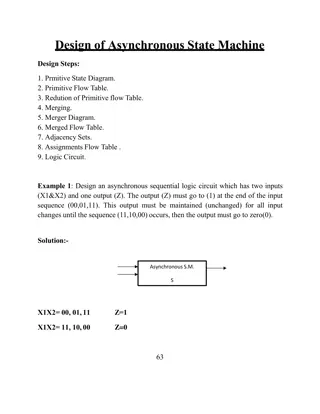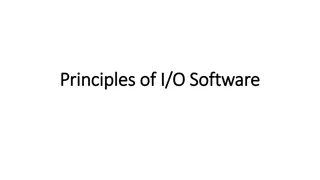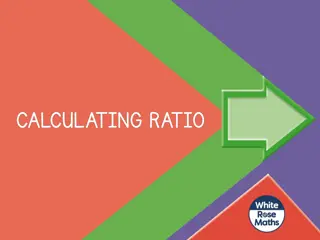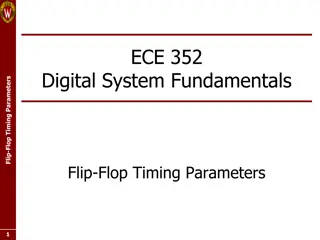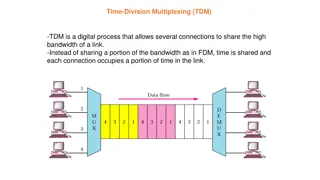Understanding Synchronous and Asynchronous Counters in Digital Electronics
Explore the concepts of synchronous (parallel) and asynchronous (ripple) counters in digital electronics, where ripple counters enable clock sharing among flip-flops and synchronous counters apply the same clock to all. Learn to design J-K and up-down counters using flip-flops with examples and state excitation tables. Discover K-maps and circuit diagrams for better visualization of the circuits. Dive into the world of counters with practical applications and functionalities.
Download Presentation

Please find below an Image/Link to download the presentation.
The content on the website is provided AS IS for your information and personal use only. It may not be sold, licensed, or shared on other websites without obtaining consent from the author. Download presentation by click this link. If you encounter any issues during the download, it is possible that the publisher has removed the file from their server.
E N D
Presentation Transcript
Counters: Two types of counters: Synchronous (parallel) counters Asynchronous (ripple) counters Ripple counters allow some flip-flop outputs to be used as a source of clock for other flip-flops. Synchronous counters apply the same clock to all flip-flops. Example 1: Design a J-K counter that goes through states 2, 4, 5, 7, 2, 4 is the counter-selfstarting. Ans. "State ExcitationTable" 25
K-maps: Circuit Diagram: 26
Example 2: Design an up-down counter using JK Flip-flop to count 0, 2, 3, 6, 4, 0 . Ans. Up-down counter counts as (0, 2, 3, 6, 4, 0,......). "State EcitationTable" K-maps: 27







